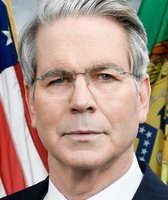Stand up for the facts!
Our only agenda is to publish the truth so you can be an informed participant in democracy.
We need your help.
I would like to contribute
Women and children from El Salvador, Guatemala and Honduras account for the biggest shift in the people showing up at America’s southwest border. We recently looked at the data that helps tease out whether they are more like refugees seeking safe haven or traditional immigrants seeking economic opportunity.
Here’s a quick look at the countries they have left behind.
El Salvador
El Salvador’s 6.2 million people live in Central America’s smallest country where the economy has been growing at about 2 percent annually. Poverty has eased over the years but still hovers around 40 percent.
The country continues to recover from a brutal civil war in which the United States spent billions of dollars backing the government against a left-leaning insurgency. The fighting began in 1979 and lasted a dozen years, leaving about 75,000 dead, many killed by quasi-official paramilitary groups.
The war sent thousands of Salvadorans fleeing to the United States. The CIA estimates that the money sent home by expatriates accounts for about 20 percent of the country’s GDP. That exodus also means that thousands of Salvadorans have family and friends in America who can help them get established if they make their way across the border.
El Salvador has the world’s highest murder rate, 82.8 per 100,000, and crime shapes life across the nation. The Latin America Public Opinion Project at Vanderbilt University found between 40 and 50 percent of respondents said that they don’t ride public buses to avoid crime, or they don’t buy things they like because they might be stolen.
Nearly 40 percent said they had considered leaving the country out of security concerns.
Guatemala
Civil war afflicted Guatemala, too, from 1960 to 1996. The conflict turned as many as 1 million people into refugees and established a steady flow of immigrants to the United States, a flow that increased after the conflict ended. State intelligence and military units morphed into criminal operations involved in drugs and smuggling.
With 15.4 million people, Guatemala has more people than any other Central American nation, but it is poor. Nearly 60 percent live below the poverty line, and per capita GDP is about half the average for the region. Nearly a third of the labor force works in agriculture, producing sugar, coffee, bananas and vegetables.
The average Guatemalan faces two threats. On the one side are violent gangs and drug traffickers. U.S. drug enforcement officials consider Guatemala a major transit country, with an estimated 1,400 metric tons of cocaine destined for America passing through. On the other are powerful families that control major sectors of the economy from agriculture to beer. Both deploy armed groups and drive rampant government corruption. The current president is under investigation, and the previous president and vice president were arrested for corruption.
Of the three Northern Triangle countries, safety concerns rate lowest for Guatemala. About 17 percent of the people in the Vanderbilt survey said they had considered leaving due to violence.
Honduras
Honduras is one of the most violent nations worldwide, second only to El Salvador for murder. The Congressional Research Service calls it "one of the poorest and most unequal countries in Latin America." Nearly two-thirds of its people live in poverty. About 40 percent work in agriculture.
While Guatemala avoided civil war, it was a staging ground for U.S.-backed forces fighting the leftist government of Nicaragua in the 1980s. When the fight ended, the country was awash in small arms and had many unemployed young men. There was a coup in 2009, and human rights abuses take place with impunity.
About a third of Hondurans told Vanderbilt pollsters that insecurity had led them to consider emigrating in the past year.
Our Sources
CIA, World Factbook, accessed June 29, 2018
Congressional Research Service, El Salvador: Background and U.S. Relations, Nov. 3, 2017
World Bank, El Salvador, accessed June 29, 2018
Center for Migration Studies, State-Level Unauthorized Population and Eligible-to-Naturalize Estimates, accessed June 29, 2018
Congressional Research Service, Guatemala: Political and Socioeconomic Conditions and U.S. Relations, March 27, 2018
Congressional Research Service, Honduras: Background and U.S. Relations, July 28, 2017
U.S. State Department, International Narcotics Control Strategy Report, March 2018
Council on Foreign Relations, Central America’s Violent Northern Triangle, June 26, 2018
New Republic, Guatemalans Aren't Just Fleeing Gangs, July 13, 2014
Insight Crime, CIACS,March 9, 2017
Vanderbilt University, Crime casts pall on Central America’s Northern Triangle, Oct. 3, 2017
Vanderbilt University and Inter-American Dialogue, Beneath the violence: How insecurity shapes daily life and emigration in Central America, October 2017
Photo: Hans Birger Nilsen, via Flickr Creative Commons






















































